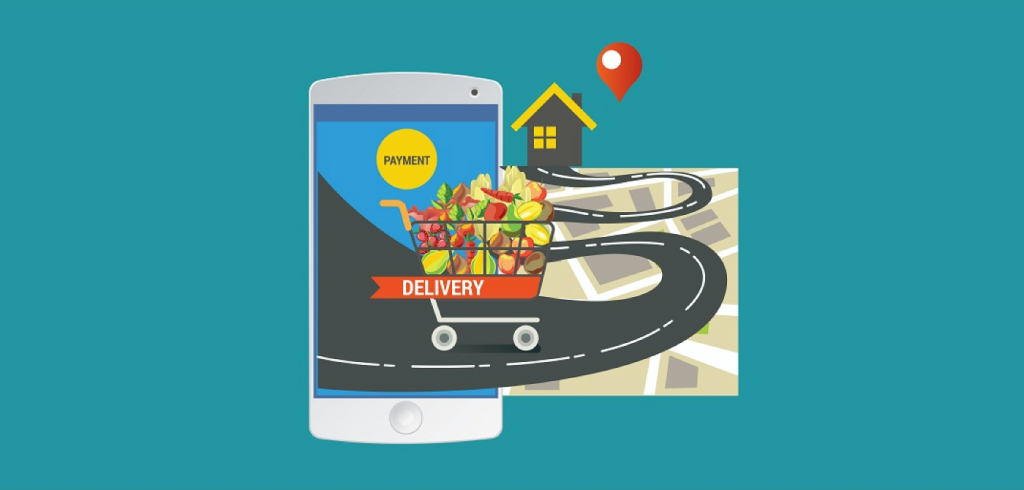Online grocery may be booming but keeping it profitable will be the challenge. Louisa Hosegood, digital and strategy director at Bis Henderson Consulting, believes micro-fulfilment could be the big game-changer.
The pandemic has advanced consumer engagement with online grocery by 5-10 years, and although online orders still only account for about 10% of the overall mix, the phenomenal growth rates experienced by retailers over the past year are likely to tip the balance on the most widely adopted fulfilment model.
Since it’s strongly believed that over half of the current online behavior will be maintained after the pandemic ends, retailers are scrambling to come up with faster modes of delivery and more efficient ways to fulfil orders.
Delivery timelines for online orders have been shrinking rapidly, ranging from a couple of days to just a few hours, leaving many grocers simply unable to compete with the retail juggernauts for the coveted superfast, premium delivery offers.
A number of grocers have invested heavily in huge, automated warehouses, a few are using the strength of partnerships, while most retailers are relying on their existing store footprint to satisfy this massive surge in demand.
In-store grocery fulfilment is by far the most widely adopted approach. It has the huge benefit of being close to the customer, which minimizes delivery costs or eliminates those costs if the customer picks up. However, there are drawbacks that have only been exacerbated by the uptake in online order volumes, and now a tipping-point has been reached.
Unrelenting online demand is taking its toll on the in-store customer experience, with online pickers roaming the aisles competing with store customers for products on the shelves and large cumbersome picking trolleys causing congestion. What’s more, retail stores are designed and laid out for browsing shoppers, which is not the most efficient format for order picking. The result is that online fulfilment costs are going through the roof and customer service is being impacted on both channels.
A possible solution
However, there is an emerging solution. The concept of micro-fulfilment leverages the advantages of localized delivery, or pickup, and combines them with the efficiency of a large, automated warehouse. These small-footprint, low-investment, highly automated systems – typically occupying 3,000ft2 -10,000ft2 – can be built into the backroom or on the perimeter of existing stores or may be deployed as a standalone facility to serve a cluster of local geographies. The idea is starting to level the playing field for businesses competing in online grocery.
The technology makes picking much faster and more accurate, offering the capability to provide online grocery pickup in under an hour from placing an order, while saving on expensive manual labor and distancing picking operations from browsing customers. Most of an order is picked in the automated system and presented to staff for consolidation and delivery, supplemented by an element of manual picking for frozen, deli or loose weighed items.
A key advantage of the automation is that it maximizes use of the cube, enabling a wide range of products to be stored densely and retrieved quickly, enhancing product choice, availability and customer service. And locating a micro-fulfilment center (MFC) inside a store benefits from the site being an established replenishment point on the grocer’s main network, so no additional drops are required.
Importantly, MFCs are far less capital-intensive than large warehouses to set up and can be fully functional within just a few months – reducing risk, smoothing investment against volume growth, and providing opportunities to test and learn through modular implementation across a wider grocery network.
Sweating existing assets in this way enables creative property solutions in space-constrained locations, which not only helps to maximize returns on real estate commitments but enables a holy grail of retail to be achieved – proximity to the fast-growing urban e-commerce shopping population.
Of course, micro-fulfilment is not limited to the grocery sector. The efficiency and cost-effectiveness of deploying such technology makes it appealing to many other e-commerce sectors, from consumer goods to healthcare. However, a standalone MFC run by a 3PL may well be more likely in these instances, where individual retailers share a larger facility with others, and where space can be flexed more easily in response to shifting demand.
Overall, micro-fulfilment has the potential to deliver substantial labor savings, faster order processing, enhanced value from property assets, a strong local connection with the customer and a significantly reduced cost-to-serve, which addresses the all-important profitability challenge.
Micro-fulfilment addresses some of the greatest challenges facing the online grocery sector. It will just take resolve and expertise to deliver.
More on Bis Henderson Consulting at www.bis-hendersonconsulting.com
About Louisa Hosegood:
 Louisa Hosegood FCMA is digital and strategy director at Bis Henderson Consulting. She has 18 years’ experience in retail and e-commerce, fulfilling senior supply chain leadership roles at some of the UK’s largest retailers – Marks & Spencer, John Lewis and Tesco. Until recently she was head of logistics network development at Marks & Spencer, where she was responsible for developing the strategy and design for a simpler omnichannel logistics network to support store and online sales of £5bn (US6.9bn) per annum for the retailer’s clothing and home lines.
Louisa Hosegood FCMA is digital and strategy director at Bis Henderson Consulting. She has 18 years’ experience in retail and e-commerce, fulfilling senior supply chain leadership roles at some of the UK’s largest retailers – Marks & Spencer, John Lewis and Tesco. Until recently she was head of logistics network development at Marks & Spencer, where she was responsible for developing the strategy and design for a simpler omnichannel logistics network to support store and online sales of £5bn (US6.9bn) per annum for the retailer’s clothing and home lines.
Over a 10-year career at John Lewis, Hosegood held both the post of head of supply chain strategy and head of commercial assurance – operations, roles that encompassed strategy formulation and mobilization, operational and commercial insight, executive communication and risk management.


